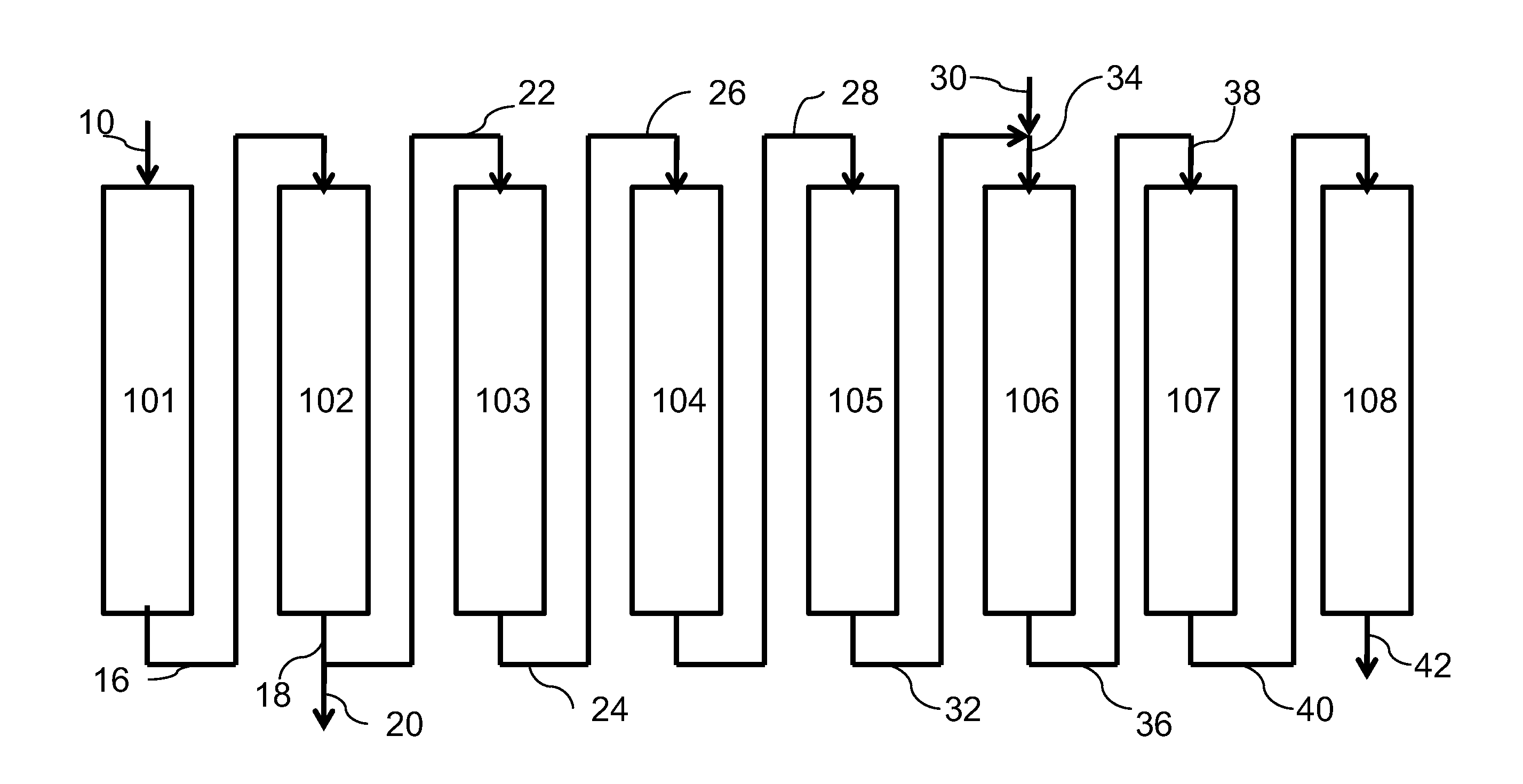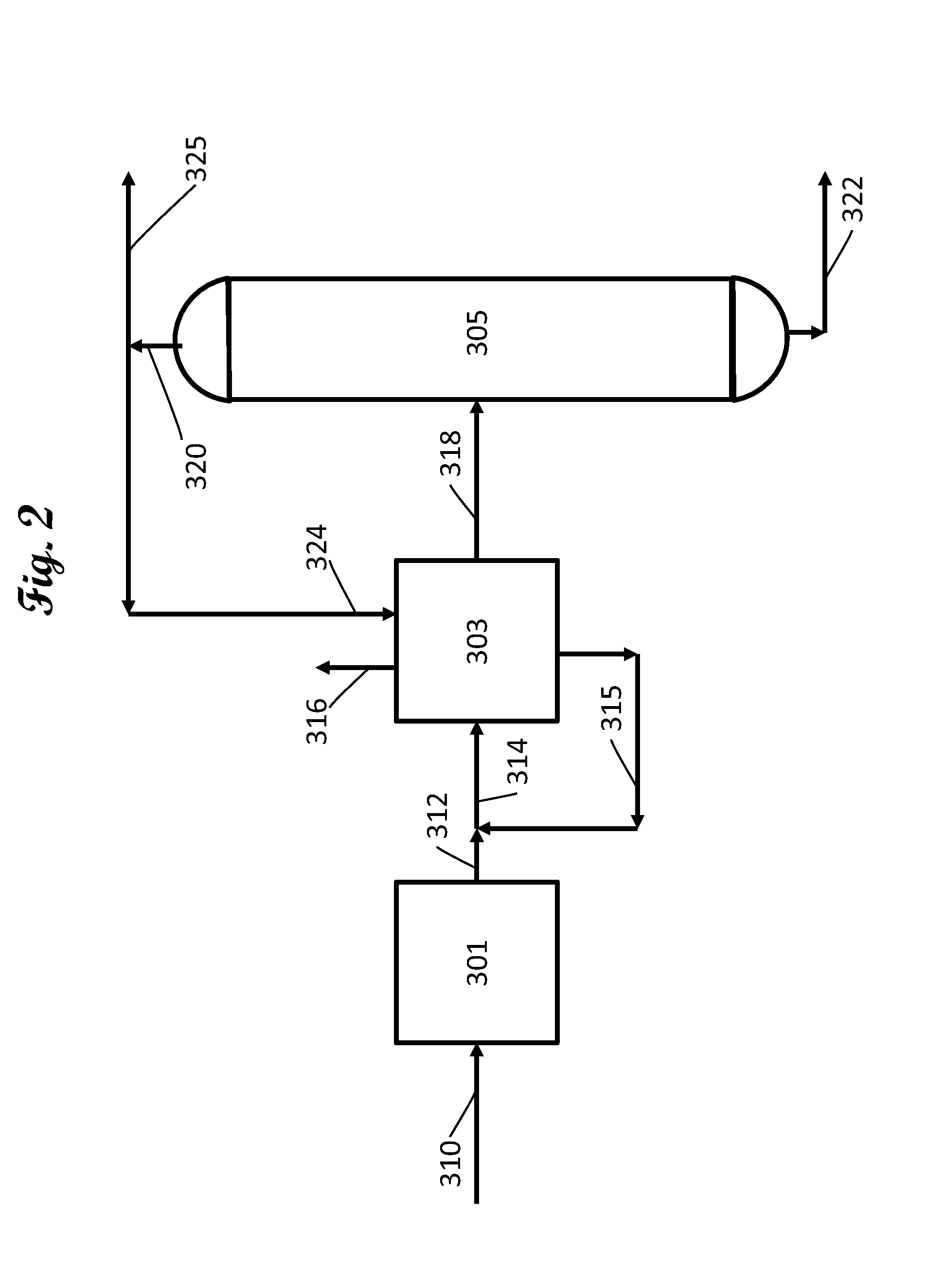Process and adsorbent for separating ethanol and associated oxygenates from a biofermentation system
a biofermentation system and ethanol technology, applied in the field of recovery and purification of ethanol and associated oxygenates, can solve the problems of inability to recover and purify materials from dilute aqueous solutions, inconvenient operation, energy-intensive, etc., and achieve the effect of reducing the energy requirement, high energy requirement for distillation of ethanol, and efficient further processing
- Summary
- Abstract
- Description
- Claims
- Application Information
AI Technical Summary
Benefits of technology
Problems solved by technology
Method used
Image
Examples
example 1
Stationary Phase Example 1
[0037]A glass column having an inside diameter of 10 mm and a length of 250 mm was packed with 11 grams of E-325 adsorbent of activated carbon. A feed stream comprising 1 vol-% ethanol in deionized water was passed to the column at a temperature of 25° C. at a flow rate of 2 mL per minute. Ethanol in the effluent was measured continuously by a Waters RI detector (Available from Waters Corporation, Milford, Mass.). At the point of ethanol breakthrough, 68 mL of volume had passed through the bed. The amount of ethanol adsorbed on the E-325 adsorbent was 0.68 grams, which represented an Adsorption ratio of 6.07 w / w.
Stationary Phase Experiments 2-4
[0038]According to the procedure described hereinabove in Stationary Phase Example 1, the breakthrough point, amount of ethanol adsorbed, and the adsorption ratio were determined for 2,3-butanediol on E-325, ethanol on FC-5, and 2,3-butanediol on FC-5. The results of Stationary Phase Experiments 1-4 are summarized in ...
PUM
| Property | Measurement | Unit |
|---|---|---|
| size | aaaaa | aaaaa |
| temperature | aaaaa | aaaaa |
| weight percent | aaaaa | aaaaa |
Abstract
Description
Claims
Application Information
 Login to View More
Login to View More - R&D
- Intellectual Property
- Life Sciences
- Materials
- Tech Scout
- Unparalleled Data Quality
- Higher Quality Content
- 60% Fewer Hallucinations
Browse by: Latest US Patents, China's latest patents, Technical Efficacy Thesaurus, Application Domain, Technology Topic, Popular Technical Reports.
© 2025 PatSnap. All rights reserved.Legal|Privacy policy|Modern Slavery Act Transparency Statement|Sitemap|About US| Contact US: help@patsnap.com



